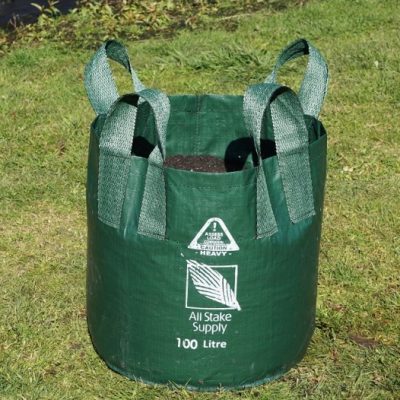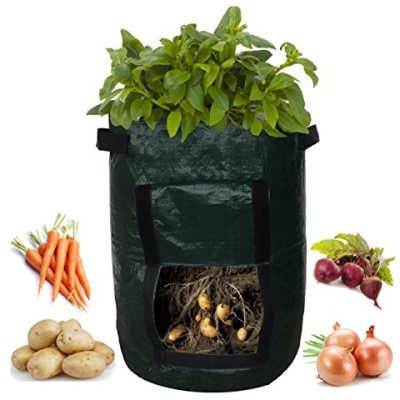Growing plants in woven plastic grow bags can be a rewarding experience. Here’s a complete guide, from seedlings to harvest, to help you successfully grow plants in these containers:
- Seed Starting:
- Fill the grow bags with a high-quality potting mix, leaving some space at the top.
- Sow the seeds according to the recommended depth and spacing guidelines.
- Water the soil gently to ensure proper moisture.
- Seedling Care:
- Place the grow bags in a warm and well-lit area, preferably near a window or under grow lights.
- Keep the soil consistently moist but not waterlogged.
- Once the seedlings have developed a few sets of true leaves, thin them out if necessary to provide adequate spacing.
- Transplanting:
- When the seedlings are strong and have outgrown their initial containers, prepare the grow bags for transplanting.
- Moisten the potting mix in the grow bags before transplanting to ensure proper hydration.
- Dig a hole in the grow bag that is deep enough to accommodate the root system of the seedling.
- Gently remove the seedling from its original container and place it in the hole.
- Fill the hole with soil, gently pressing it around the base of the seedling to secure it.
- Watering and Moisture Management:
- Water the plants in the grow bags regularly, keeping the soil consistently moist.
- Monitor the moisture levels and adjust the frequency and amount of watering based on the specific needs of the plants.
- Avoid overwatering, as it can lead to root rot. Ensure proper drainage by checking that the grow bags have sufficient drainage holes.
- Nutrient Management:
- Fertilize the plants in the grow bags according to their specific nutrient requirements.
- Use organic fertilizers or slow-release fertilizers formulated for container plants.
- Follow the recommended application rates and frequency to provide a balanced nutrient supply.
- Sunlight and Temperature:
- Place the grow bags in a location that receives adequate sunlight for the specific plants you are growing.
- Most plants require at least 6 hours of direct sunlight per day.
- Monitor the temperature and protect the plants from extreme heat or cold by moving the grow bags to a suitable location if needed.
- Pruning and Training:
- Regularly prune or train the plants in the grow bags to maintain their shape, promote bushier growth, and prevent overcrowding.
- Remove dead or damaged foliage to maintain plant health.
- Provide support such as stakes or trellises for vining or tall plants as they grow.
- Pest and Disease Management:
- Monitor the plants for signs of pests or diseases.
- Take prompt action to control pests using organic methods such as handpicking, insecticidal soaps, or neem oil.
- Practice good hygiene and remove any infected plants or plant debris to prevent the spread of diseases.
- Harvesting:
- Follow the specific harvesting guidelines for each plant variety.
- Harvest fruits, vegetables, or herbs when they reach the desired maturity and size.
- Use clean and sharp tools to minimize damage to the plants during harvest.
- Crop Rotation and Succession Planting:
- After harvesting, consider practicing crop rotation by planting different types of plants in the grow bags.
- This helps minimize the risk of diseases and ensures proper nutrient balance in the soil.
- Plan for succession planting to maximize the use of grow bags throughout the growing season.
By following this complete guide, you can enjoy a successful journey from seedlings to harvest in woven plastic grow bags.








